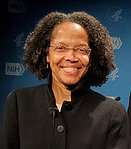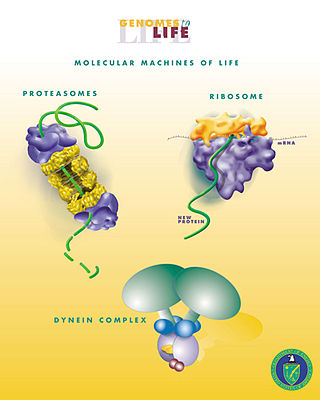
Biological engineering or bioengineering is the application of principles of biology and the tools of engineering to create usable, tangible, economically viable products. Biological engineering employs knowledge and expertise from a number of pure and applied sciences, such as mass and heat transfer, kinetics, biocatalysts, biomechanics, bioinformatics, separation and purification processes, bioreactor design, surface science, fluid mechanics, thermodynamics, and polymer science. It is used in the design of medical devices, diagnostic equipment, biocompatible materials, renewable energy, ecological engineering, agricultural engineering, process engineering and catalysis, and other areas that improve the living standards of societies.
Peter W. Zandstra, is a Canadian scientist who is the Director of the Michael Smith Laboratories at the University of British Columbia.

Anthony "Tony" Guiseppi-Elie is a Trinidad-born, American scientist, engineer, and entrepreneur. He is the President and Sr. Fellow of the American International Institute of Medical Sciences, Engineering and Innovation and the President and Scientific director of ABTECH Scientific, Inc. He is noted for his research and commercial development of biologically inspired and chemically responsive electroconductive hydrogels. Guiseppi-Elie is the Founding Editor-in-Chief of the transdisciplinary journal Bioengineering.

Nicholas (Nikolaos) A. Peppas is a chemical and biomedical engineer whose leadership in biomaterials science and engineering, drug delivery, bionanotechnology, pharmaceutical sciences, chemical and polymer engineering has provided seminal foundations based on the physics and mathematical theories of nanoscale, macromolecular processes and drug/protein transport and has led to numerous biomedical products or devices.

The American Institute for Medical and Biological Engineering (AIMBE) is a non-profit organization founded in 1991, and headquartered in Washington, D.C. It represents 50,000 medical and biomedical engineers, and academic institutions, private industry, and professional engineering societies.
Martin (Maish) L. Yarmush is an academic, American scientist, physician, and engineer known for his work in biotechnology and bioengineering. His faculty career began in 1984 at MIT in the Department of Chemical Engineering as a Principal Research Associate and Lucille Markey Scholar in Biomedical Science. In 1988 he joined Rutgers University, as Professor of Chemical and Biochemical Engineering and a member of the Center of Advanced Biotechnology and Medicine. In 1995, he returned to the Boston area to serve as the Helen Andrus Benedict Professor of Surgery and Bioengineering in the Harvard-MIT Division of Health Sciences and Technology, and to establish the Center for Engineering in Medicine at the Harvard Affiliated Teaching Hospitals. In 2007 he returned to Rutgers to hold the Paul and Mary Monroe Endowed Chair in Science and Engineering and serve as Distinguished Professor in the Department of Biomedical Engineering. He also holds a Lecturer in Surgery and Bioengineering position at Harvard Medical School, and is a member of the Senior Scientific Staff at the Shriners Hospital for Children, Boston.

Samir Mitragotri is an Indian American professor at Harvard University, an inventor, an entrepreneur, and a researcher in the fields of drug delivery and biomaterials. He is currently the Hiller Professor of Bioengineering and Hansjörg Wyss Professor of Biologically Inspired Engineering at Harvard John A. Paulson School of Engineering and Applied Sciences and the Wyss Institute for Biologically Inspired Engineering. Prior to 2017, he was the Duncan and Suzanne Mellichamp Chair Professor at University of California, Santa Barbara.

Edward Wilson Merrill was an American biomaterials scientist. He was one of the founders of bioengineering, and specifically the biomedical engineering field it developed from chemical engineering. Merrill was born to Edward Clifton Merrill (1881–1949), a chemical engineer and chief chemist of the United Drug Company (Rexall) and Gertrude Wilson (1895–1978).
Treena Livingston Arinzeh is an American biomedical engineer and academic.
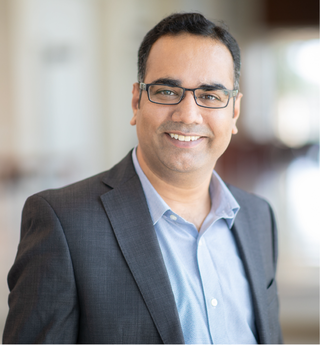
Akhilesh K. Gaharwar is an Indian academic and a professor in the Department of Biomedical Engineering at Texas A&M University. The goal of his lab is to understand the cell-nanomaterials interactions and to develop nanoengineered strategies for modulating stem cell behavior for repair and regeneration of damaged tissue.
Arnold Gerhard Fredrickson was an American chemical engineer and professor in the department of chemical engineering and materials science (CEMS) at the University of Minnesota. He was known for his work in transport phenomena, bioengineering and population dynamics. Fredrickson was the author of over 100 scientific publications and advisor to over 50 graduate students. He was recognized for his contributions to chemical engineering with election as fellow to the American Association for the Advancement of Science (1997) and fellow and founding member of the American Institute of Medical and Biological Engineers (1993).
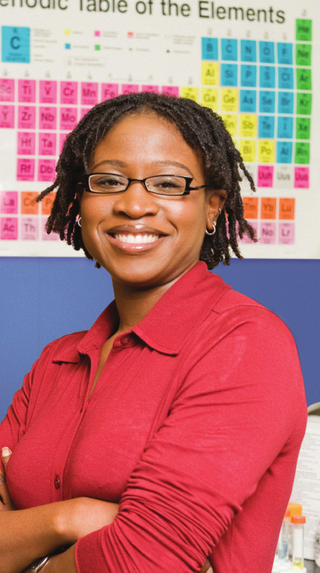
Omolola (Lola) Eniola-Adefeso is a Nigerian-American chemical engineer and the University Diversity and Social Transformation Professor of Chemical Engineering, Biomedical Engineering, and Macromolecular Science and Engineering at the University of Michigan. Eniola-Adefeso is also a co-founder and chief scientific officer of Asalyxa Bio. Her research looks to design biocompatible functional particles for targeted drug delivery.

Celeste M. Nelson is a Professor of Chemical and Biological Engineering and the Director of the Program in Engineering Biology at Princeton University. She is a Fellow of the American Institute for Medical and Biological Engineering (AIMBE) and was a finalist in the 2017 and 2018 Blavatnik Awards for Young Scientists.
Lance Collins is an engineer and professor for mechanical and aerospace engineering at Virginia Tech. He was previously the Joseph Silbert Dean of Engineering at the Cornell University College of Engineering and is now the inaugural vice president and executive director of the new Virginia Tech Innovation Campus.

Debra Auguste is an American chemical engineer and professor at Northeastern University in the department of chemical engineering. Auguste is dedicated to developing treatments for triple negative breast cancer, one of the most aggressive and fatal cancers that disproportionately affects African American women. Her lab characterizes biomarkers of triple negative breast cancer and develops novel biocompatible therapeutic technologies to target and destroy metastatic cancer cells. Auguste received the 2012 Presidential Early Career Award for Scientists and Engineers and in 2010 was named in the 50 Most Influential African-Americans in Technology. In 2020, Auguste became an Elected Fellow of the American Institute for Medical and Biological Engineering.
Sina Y. Rabbany is the Jean Nerken Distinguished Professor of Engineering at Hofstra University, dean of the Fred DeMatteis School of Engineering and Applied Science, founding director of the school's Bioengineering program, and adjunct associate professor of bioengineering at the Weill Cornell Medical College of Cornell University. Under his tenure, the DeMatteis School's fast growth led to the school's planned expansion into a new Science and Innovation Center. His research concerns cellular and tissue engineering of the vascular system and investigates the impact of the biophysical microenvironment on the structure and function of endothelial cells. His research explores the capabilities of endothelial cells to build functional blood vessels and support organ regeneration. His h-index is 28 by Google Scholar.
Beth L. Pruitt is an American engineer. Upon completing her master's degree in manufacturing systems engineering from Stanford University, Pruitt served as an officer in the United States Navy. She is a full professor of mechanical engineering, biological engineering, and biomolecular science & engineering at the University of California, Santa Barbara. She is a fellow of both ASME and AIMBE.
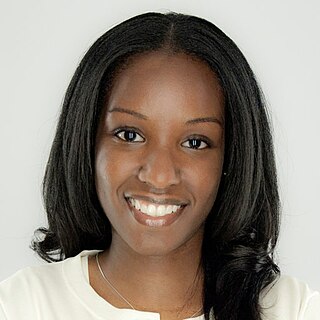
Stacey Finley is the Nichole A. and Thuan Q. Pham Professor and associate professor of chemical engineering and materials science, and quantitative and computational biology at the University of Southern California. Finley has a joint appointment in the department of chemical engineering and materials science, and she is a member of the USC Norris Comprehensive Cancer Center. Finley is also a standing member of the MABS Study Section at NIH. Her research has been supported by grants from the NSF, NIH, and American Cancer Society.

Chenzhong Li is a Chinese-born Canadian & American biomedical engineer, chemist, inventor, professor, and journal editor. Li is the co-Editor-in-Chief of the journal Biosensors and Bioelectronics (Elsevier) and the associate editors of journals RESEARCH (AAAS) and Biosensors (MDPI).
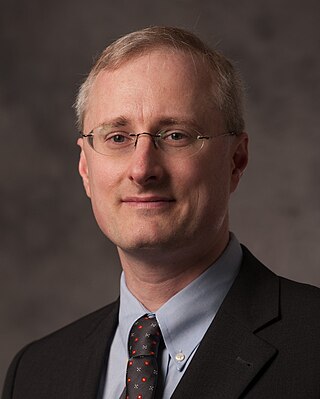
Juergen Hahn is an American engineering professor. His research focuses on computational systems biology with a specific emphasis on the development of data science approaches and their application to biological pathways relevant to the life sciences.
